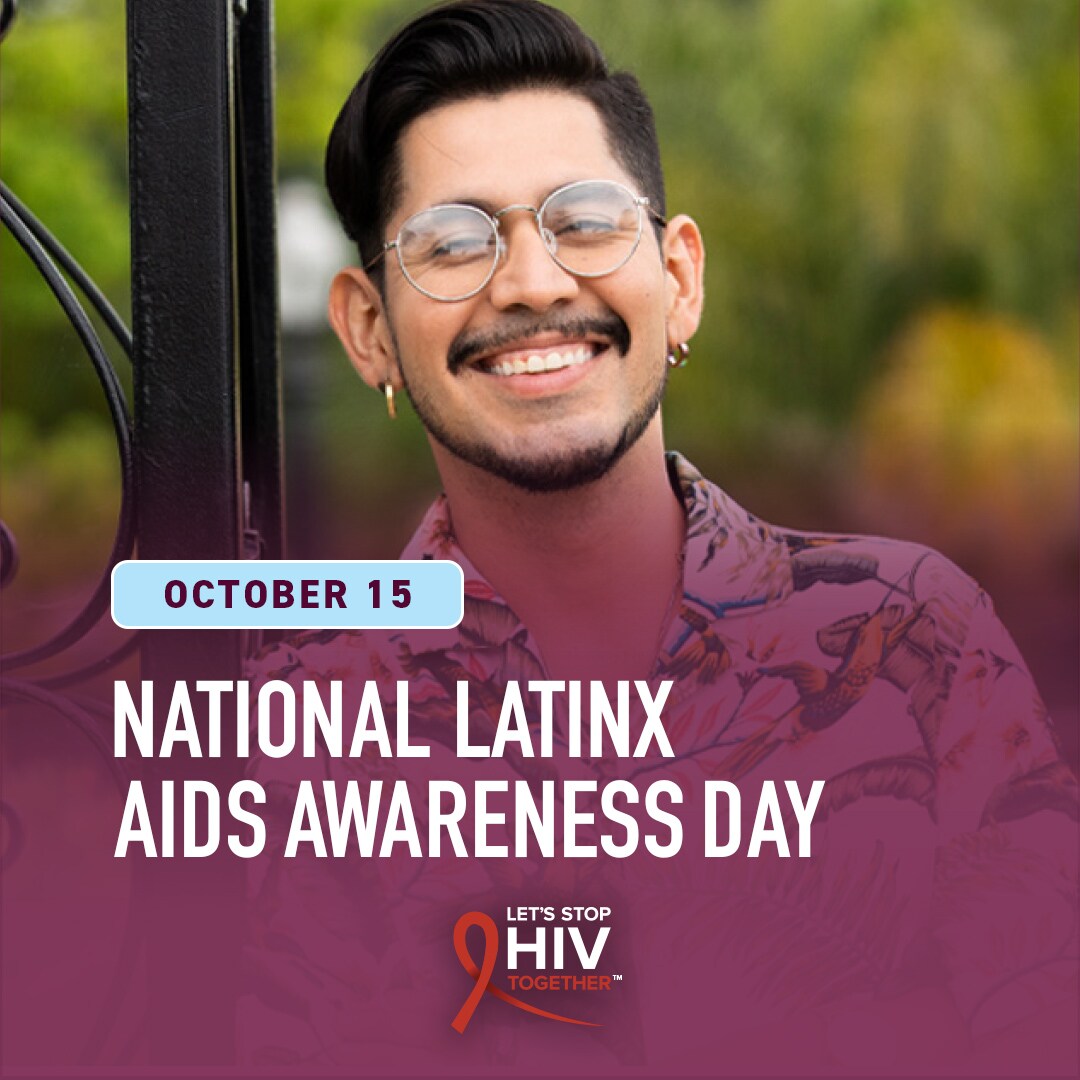Dear Colleague: October 13, 2022

October 13, 2022
Dear Colleague,

October 15 is National Latinx AIDS Awareness Day (NLAAD), a time to raise awareness about HIV among Hispanic/Latino people. This NLAAD, please join us in celebrating the progress in HIV prevention among this population, while we highlight the work being done to further reduce HIV stigma and health care discrimination among Hispanic/Latino people with HIV.
In 2019, Hispanic/Latino people accounted for 18% of the population, but 29% (10,200) of the 34,800 estimated new HIV infections in the United States. While there was no significant change in estimated infections among Hispanic/Latino people overall between 2015 and 2019, the annual number of HIV infections decreased among young Hispanic/Latino men aged 13 to 24. This may indicate partial success of focused HIV prevention, testing, and treatment efforts. However, there is still much work to do to reduce HIV incidence and disparities.
Social and structural factors, such as stigma, barriers to health care, discrimination, and systemic racism can create health disparities and limit access to HIV testing, prevention, and treatment services. According to a new Morbidity and Mortality Weekly Report (MMWR), data from 2018 to 2020 indicate that Hispanic/Latino people with HIV routinely experience HIV stigma and health care discrimination. On a scale ranging from 0 (no stigma) to 100 (high stigma), Hispanic/Latino people with HIV reported a median stigma score of 30 in 2020. Additionally, data from the MMWR show that nearly 23% of Hispanic/Latino people with HIV said they had experienced discrimination in health care settings. Of those who experienced discrimination, 30% attributed the discrimination to having HIV, 23% to their sexual orientation or sexual practices, and 20% to their race or ethnicity.
Reducing HIV stigma and discrimination is a priority outlined in the 2022-2025 National HIV/AIDS Strategy, and CDC is leading many efforts to address these social and structural factors that impact populations most affected by HIV, including Hispanic/Latino people. Activities include funding and supporting health departments and community-based organizations to implement tailored HIV prevention programs that address social determinants of health, analyzing surveillance data to understand barriers to HIV care, and supporting health care providers to implement a status neutral approach to HIV care. CDC’s web pages for Hispanic/Latino people and Hispanic/Latino gay and bisexual men provide additional information on current HIV prevention efforts.
Furthermore, CDC’s Let’s Stop HIV Together (Detengamos Juntos el VIH) campaign, which is part of the national Ending the HIV Epidemic in the U.S. initiative, offers English and Spanish resources that have been transcreated (tailored and recreated) to meet the cultural needs of Hispanic/Latino people. Health care providers can download HIV testing, prevention, and care materials to better serve Hispanic/Latino people as well.
Thank you for your continued partnership and ongoing commitment to ending the HIV epidemic in the United States. Although we have made progress in preventing new HIV infections and reducing the longstanding disparities and inequities, this NLAAD is an opportunity for us to do even more to end HIV stigma and discrimination.
Help raise awareness and ensure Hispanic/Latino people have continued access to high quality HIV services, including testing, prevention, and treatment by visiting the NLAAD digital toolkit and sharing social media content using the #StopHIVTogether and #NLAAD hashtags.
Together, we can make a difference.
Sincerely,
/Robyn Fanfair/
Robyn Neblett Fanfair, MD, MPH
Captain, USPHS
Acting Director
Division of HIV Prevention
National Center for HIV, Viral Hepatitis, STD, and TB Prevention
Centers for Disease Control and Prevention
www.cdc.gov/hiv
/Jonathan Mermin/
Jonathan H. Mermin, MD, MPH
Rear Admiral and Assistant Surgeon General, USPHS
Director
National Center for HIV, Viral Hepatitis, STD, and TB Prevention
Centers for Disease Control and Prevention
www.cdc.gov/nchhstp